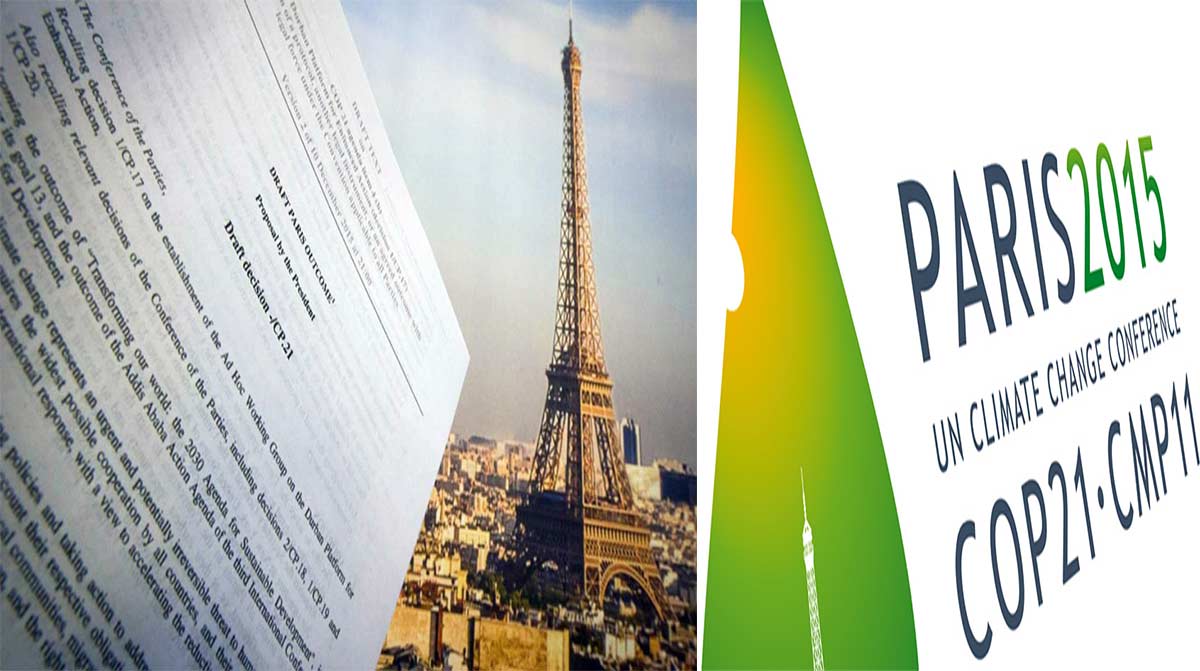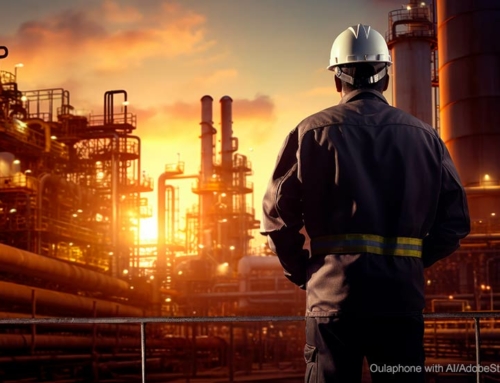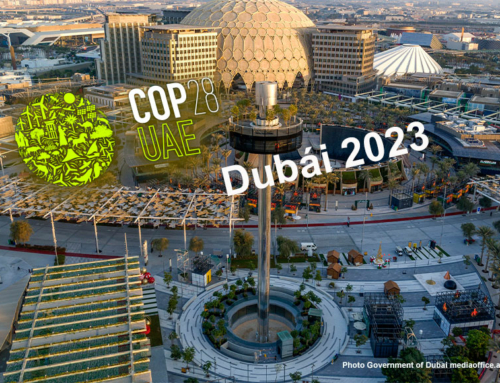The failure of the Paris Agreement would be the failure of Homo sapiens. If we do not reverse the increase in global warming and we do not support sustainability on our planet, we will all be losers. There are clear indications that we are going in a opposite direction to the 2015 agreements, as can be seen in this paper. The increasing fever of the fracking, due to the cheapening of the processes of extraction of the shale gas and the shale oil, added to the enormous found deposits is not good news. Neither are the millions of liters of water required to activate each well through hydraulic fracturing, a technology. This is clearly untenable due to the scarcity of the vital liquid that exists in many places. Fracking is on the way to become the great obstacle to succeed in the battle against climate change and achieve the goal of limiting the increase in global temperature to less than 2ºC by the end of the century. This requires reducing greenhouse gas (GHG) emissions, until their total eradication.
A new world energy chess board, unsuspected for many
There are two situations that seriously threaten the climate agreements reached in 2015. The first is the fever created around the technology of fracking, which has completely changed the global energy chessboard, incorporating new players together with the traditional ones. To get an idea of this, the United States is near to displace Saudi Arabia as the world’s largest oil producer, thanks to its unconventional oil exploitation. The other countries that actively produce shale fuels are China, Argentina and Canada. There are others that are beginning to venture into fracking, including Colombia and Mexico, the latter the most advanced. There are many other nations that possess large unconventional energy reserves.
The second threat is the intention to extract traditional oil from previously unsecured sites. The administration of Donald Trump “plans to open a large ocean surface to marine exploration and, for the first time in 40 years, allow drilling in the Arctic National Wildlife Refuge (…) with some 11.8 billion barrels of technically recoverable oil ” The appetite for fossil fuels is still alive, as evidenced by the continuing discoveries of oil fields and the enthusiasm of countries “favored” by the findings, which put into question the credibility of their commitments to the Agreement on Paris.
Do not look at what they say but what they do
It has been said that what a person says should not be considered, but what he does, when referring to an individual whose performance contrasts markedly with his speech. This also applies to countries. The Paris Agreement was accepted by 197 nations that signed a pledge to reduce their GHG emissions to reach the 2ºC target, necessary to stop the increase in global warming. But, the news brings information that contradicts many times the letter and the spirit of the climate agreement.
A clash of constellations is looming
There is a glimpse of a conflict between supporters of fossil fuels and those who fight against climate change. A collision between the deniers and those who believe in global warming and its foreseeable damages. A mismatch between what is said and what is done. The fracking fever is a phenomenon that already involves billions of dollars in investments, which reinforces the hypothesis of the clash of constellations, which we will soon be able to evaluate, since the activation of the Paris Agreement is scheduled for 2020, moment that it will require the commitment of the 197 countries, in addition to the payment of the first 100 billion dollars for the Green Climate Fund.
Action against climate change is underway
It must be recognized that there is an important movement to introduce clean energies such as solar energy or wind energy and a Climate Action – as it is called – promoted by the UN through excellent work, organization and dedication, with special emphasis on involving children and teenagers on the subject. It is also obligatory to mention the commitment of the automotive industry to incorporate the electric car to the assembly lines and plans to annually increase the production of plug-in units. On the other hand, Norway has indicated as a deadline to prohibit the transit of internal combustion engines by 2025, France, 2040 and other countries such as India and Germany are studying the subject. But it is also to be presumed that the abundance of fossil fuels coming from new technologies and the discovery of huge conventional deposits will flood the market with oil and gas so cheap that the solar energy and electric power industries will go to work hard to compete with gas and oil.
Shale gas and shale oil are no longer so expensive
Hydraulic fracturing is an old-fashioned unconventional technology, but in recent years has seen its expansion due to several reasons: the fear of reduction of traditional hydrocarbon deposits, the laxity of permitting for exploitation, the decrease in environmental controls and end the threat of the use of oil and natural gas as geopolitical weapons. On the other hand, the need to compete during periods of lowprices of traditional oil forced to improve efficiency throughout the process, achieving considerable reductions in operating costs, lowering the cost of two final products of fracking: shale gas and shale oil. All this encourages the fever by the sources of energy found under the yard of the house, in countries that were not even producers of conventional gas or oil, but now they are possessors of enormous wealth. The issue is so intense that a “market-by-knowledge strategy” has been created. For example, China, one of the largest holders of shale shafts under its soils, exchange knowhow with the United States, a country that is a leader in hydraulic fracturing, for concessions for exploitation through new technologies.
Figurative description of the hydraulic fracturing process
The shale or slate consists of a bed of low porosity sedimentary rocks, which in their formation process trapped a certain amount of hydrocarbons. The bed has been there for millions of years, hidden several kilometers deep, until discovered by humans. Imagine the process of Fracking as a long straw that must break and penetrate a huge stone formation and then extract its contents. The shale bed is like a gigantic natural container of gas or oil, both of similar characteristics that conventional gas or oil, but not the technology needed to extract them. The figurative sorbet, when encountering the bed, begins to curve until it reaches the horizontal line, after which it continues advancing in this position several thousand meters. In its journey it is fracking, breaking the container to release the hydrocarbon, which rises by pressure to the surface.
A vision based on the exploitation of shale oil in Argentina
Part of the information of this section is taken from a report made in May 2015 by the Spanish media Eldiario.es, in Vaca Muerta, province of Neuquén, in the Argentine pampas. This reservoir, with a geological formation of 30,000 km2, converts the southern country into the second with the most unconventional gas resources in the world and the fourth in unconventional oil. The visit was made specifically to Campo Campana, the most important hydraulic stimulation work outside the United States. There the oil company YPF works together with Chevron. YPF was acquired by the Spanish company Repsol in 1999 and expropriated by the government of Cristina Fernández de Kirchner in 2012. The process that we relate below, and the data, refer in some of its parts to the extraction of shale oil in Vaca Muerta.
The derrick is 54 meters high, from which the workers control the work through monitors. The drill bit is six inches in diameter. Once the hole is made, it is covered with steel tubes and sealed with cement, presumably to prevent leaks. In this case a depth of 3200 meters was reached. Of the details of fracturing or hydraulic stimulation itself, the information provided by the report is scarce. It only says that when reach that stage the activity multiplies and there are up to a hundred people in the well and they gather between 15 and 20 trucks with motors connected to hoses, ready to introduce into the well a mixture of water, sand and chemical products at a very high pressure. It is the moment of fracking, a process that is very much questioned by environmental groups, which takes place over four days, between 10 and 15 times, depending on the size of the well. When the pressure and chemicals overcome the resistance of the rock, fracture occurs, which is done in a controlled way at the bottom of the well. The force of the water causes cracks in the core of the rock and touches the sand the function of keeping the cracks open, so that the gas or oil can flow freely to the surface.
“There are no picture scenes of black jets emerging in the middle of the desert. In reality, everything moves through those pipes that travel tens of kilometers to the plants where the fuels are separated and stored. ” In total it takes two months of work, 24 hours a day, to put a well in operation. In the first three years there is usually “natural upwelling”, then you must resort to a pumping device, similar to traditional ones. Once in operation, a shale oil well may be in production for three decades, supposedly, since no well is old enough to prove it. The specialists indicate that an unconventional well does not behave like a conventional one. In the beginning, a very high production curve can be seen, but then it drops sharply. Once the task is completed, the tower travels by its own means, at about 10 meters per hour, so that it is not necessary to disarm it and reassemble it. Wells should be at a minimum distance of 350 meters to avoid problems or leaks during stimulation.
The allegations of the defenders of fracking
They argue that the technique has no greater risks than those of other technologies used by the industry. They insist on the economic benefits of the huge volumes of hydrocarbons only extractable through fracking. They argue that in cases where contamination has occurred, it has been due to wrong practices, such as failures in the drilling process, the cementing of the wells or inadequate treatment of the wastewater, but not the technology itself.
What the environmental groups claim
They refer to the environmental impact of hydraulic fracturing, including contamination of aquifers, high water consumption, soil, water and air pollution, return of gases and chemicals used to the surface, contamination of the land due to discharges and probable effects on the health. They also point to cases of increased seismic activity.
Eighty Olympic water pools to inject on a single platform
For something called fracturing hydraulics. Some sources point out that a platform with six wells of 2 km depth and 1.2 km of horizontal travel may need up to 210,000 tons of water, only for the fracture phase, equivalent to more than 80 Olympic swimming pools. If technology expands around the world, the shortage of drinking water on the planet will undoubtedly be affected.
Thick books have been written about water. Here we will see only two examples, enough to illustrate the seriousness of the problem. In China, which is committed to fracking, water scarcity is a key concern. Experts warn that the country will face a growing shortage of water in the coming years. Water-intensive industries, such as mining, compete for increasingly scarce sources of vital liquid. The lack of precipitation in the northwest of the country, “where it is believed that much of the shale is, means that these areas will have to depend on limited and finite groundwater. Given this shortage, China established (…) a program for planting clouds in 2012. ” In South Africa, according to a notice dated March 30, 2017, we read that the government approved the use of “fracking” in the Karoo desert, with expectations of extracting more than 1.4 billion cubic meters of shale gas. The contradiction is remarkable when we read a news item on 01/31/2018, in the NYT, about the “zero day” in Cape Town, in which the capital of South Africa will run out of water reserves in less than three months, due to a severe drought that lasts three years, considered the worst in a century.
Tons of chemicals and toxic products at the bottom of the well.
Between 98% and 99.5% of the injected fluid is water and sand at a pressure between “345 and 690 atmospheres, equivalent to the pressure under the sea at depths between 3450-6900 m”. The remaining percentage is equivalent to between one and two tons of chemical products, some of them very toxic.
Pollution by the return of a part of the chemicals with wastewater
Another problem is the handling of the return fluid that rises to the surface next to the gas. The part not recovered remains in the subsoil from where it could emerge towards the surface and in its path contaminate the aquifers. The compound is highly toxic and continues to flow in certain quantities for long periods, with risks of contamination and diseases for nearby populations. A report issued in 2011, by the European Parliament’s Committee on the Environment, Public Health and Food Safety, concluded that fracking produces an “emission of pollutants into the atmosphere, affecting groundwater due to flow of fluids or gases caused for leaks or spills, leakage of fracturing liquids and uncontrolled discharges of wastewater, as well as the use of more than 600 chemical products to release natural gas “. That same year “the Department of Public Health of the University of Colorado and Duke University also pointed to methane pollution from hydraulic fracturing processes. The contamination of aquifers by methane has adverse effects on water quality, and in some extreme cases it can cause an explosion “. Methane that escapes into the atmosphere, even in small quantities, can increase global warming, since its contribution to the greenhouse effect is 21 times greater than that of CO2. In 2014, the European Commission issued recommendations to guarantee adequate protection of the environment to member countries that wish to produce unconventional hydrocarbons, using hydraulic fracturing.
Countries where fracking is prohibited or there is a moratorium on its implementation
In France the technique of hydraulic fracturing was banned by the parliament on June 30, 2011. Also, in Bulgaria, on January 18, 2012. In May of that same year, the German government decided to temporarily halt its plans to implement the fracture hydraulics. In Spain, in 2012 and 2013, the autonomous communities of Cantabria and La Rioja, respectively, prohibited hydraulic fracturing in their territory and Valle de Mena (Burgos) was declared a municipality free of hydraulic fracture. Switzerland has banned the use of technology through a national moratorium. In Italy, two shale gas exploitation projects were paralyzed, one through social protest and the second by the government itself. In Northern Ireland, in 2011, parliament voted in favor of a two-year moratorium on hydraulic fracturing. The Senate endorsed it in June 2017. In Ireland, in 2013, the government established an informal two-year moratorium on the exploitation of shale gas. In the United States, some states and cities have banned the use of technology. This is the case of the State of Vermont in 2012. That same year, the State of New Jersey prohibited the deposit of waste from the extraction of shale gas in its territory. Other states and cities have declared moratoria for hydraulic fracturing, including the state of New York. In England, Prime Minister Theresa May, in 2016, decided to break the moratorium and give an impulse to fracking, and in turn to nuclear energy, while suppressing the Department of Energy and Climate Change. One of the first licenses granted was to the company Cuadrilla in the county of Lancashire, precisely the scene of the battle against fracking carried out by environmental groups.
Sandor Alejandro Gerendas-Kiss
Sources:
Wikipedia. Petróleo de esquisto. Retrieved from https://es.wikipedia.org/wiki/Petr%C3%B3leo_de_esquisto
Eldiario.es. Así se trabaja en un pozo de ‘fracking’. Retrieved from http://www.eldiario.es/internacional/funciona-pozo-fracking_0_392311804.html
Fractura Hidráulica No. Qué es el shale gas y el fracking. Retrieved from http://www.fracturahidraulicano.info/gas-fracking.html
Villa de Neila. Fractura Hidráulica Retrieved from http://www.villaneila.com/web/index.php/fracking
The Diplomat. The “Fracking” Revolution Comes to China. Retrieved from https://thediplomat.com/2013/03/the-fracking-revolution-comes-to-china/
Bloomberg. The Dark Side of America’s Rise to Oil Superpower. Retrieved from https://www.bloomberg.com/news/articles/2018-01-25/the-dark-side-of-america-s-rise-to-oil-superpower
Wikipedia. Hydraulic fracturing. Retrieved from https://en.wikipedia.org/wiki/Hydraulic_fracturing







Leave A Comment